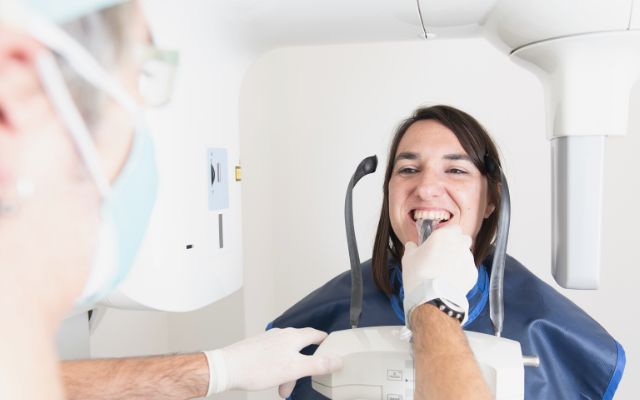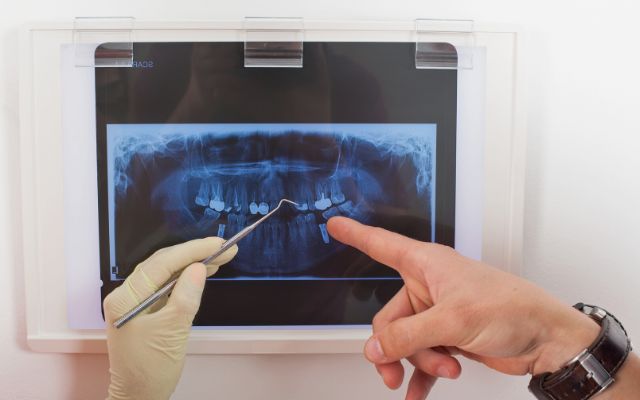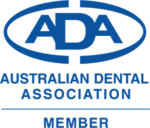Dental X-Ray
Expert Dental X-ray in Bassendean
Detect hidden dental issues early with comprehensive digital X-rays tailored to your needs. Spring Orchid Dental Bassendean delivers sharp, detailed images that reveal cavities, bone loss, impacted teeth and more, helping you and your dentist make informed decisions for lasting oral health.
Call us at 08 6155 8999 or book online for your appointment. Your oral health matters to us.

How Do Dental X-rays Work?
Dental X-rays, or radiographs, are images of your teeth that help dentists evaluate and diagnose oral diseases and conditions that are not visible during a regular dental exam. They enable your dentist to see between and inside your teeth and below your gum line – areas usually out of sight for the naked eye.
Our Digital X-Ray Process
Step 1: Consultation and Preparation
We position the sensor and shield you with protective lead aprons for your safety
Step 2 Image Capture
Our digital X-ray unit captures high-definition radiographs in seconds
Step 3 Image Review
Dentist reviews images on a large screen, explains findings and recommends personalized treatment plans
Step 4 Follow-Up
You receive a copy of your images and a clear outline of next steps for your treatment journey
Benefits of Regular X-Rays
Regular digital X-rays detect cavities and decay early. They monitor bone density and track gum disease progression. These images guide precise planning for implants and braces. They also uncover hidden infections or cysts. Early detection saves you time and money.

Get In Touch
Dental X-rays are not just a procedure; they’re an investment in your oral health. Don’t wait for dental issues to progress. Call us now to book your Dental X-ray.
Why Choose Our Digital X-Rays
Innovative Technology
We utilize the latest advancements in dental imaging technology to provide our patients with high-quality, detailed, and accurate X-ray images for comprehensive diagnosis and treatment planning.
Individualized Care
At Spring Orchid Dental, we understand that every patient is unique. That's why we use Dental X-rays to personalize each treatment plan, ensuring optimal oral health tailored to individual needs.
Expert Analysis
Our highly trained professionals are skilled at interpreting Dental X-rays, detecting potential issues early, and devising effective treatment strategies. We are committed to delivering the highest standard of care to our patients.
FAQs about Dental Radiographs
How Many Dental X-ray Types Are There?
There are two primary forms of dental X-rays: intraoral (the X-ray film is within the mouth) and extraoral (the X-ray film is outside the mouth).
The most prevalent type of X-rays are intraoral X-rays. There are numerous intraoral X-ray kinds. Each depicts distinct elements of teeth.
- Bitewing X-rays depict the upper and lower teeth in a single region of the mouth. Each bitewing displays a tooth from its crown (visible surface) to the level of its underlying bone. Bitewing X-rays detect cavities between teeth and changes in bone density caused by periodontal disease.
- Bitewing X-rays can also be used to check whether a crown (a cap that completely encircles a tooth) or other restorations fit properly (such as bridges). Additionally, it can detect any wear or degradation of dental fillings.
- Periapical X-rays depict the entire tooth, from the crown to the point where the tooth joins to the jaw, beyond the root.
- Each periapical X-ray image depicts all teeth in either the upper or lower jaw. X-rays of the periapical region detect any abnormalities in the root and surrounding bone structures.
- Occlusal X-rays monitor the development and positioning of a whole dental arch in the upper or lower jaw.
Extraoral X-rays are utilized to diagnose dental issues in the jaw and skull. There are a variety of extraoral X-rays available.
- On a single X-ray, panoramic X-rays depict the whole mouth, including all teeth in the upper and lower jaws. This X-ray reveals the position of completely erupted and erupting teeth, as well as impacted teeth, and aids in the identification of malignancies.
- Tomograms display one layer or “slice” of the mouth while blurring the other layers. This X-ray analyzes structures that are difficult to discern due to the presence of other neighboring structures.
- In cephalometric projections, the complete side of the head is displayed. This X-ray examines the teeth in relation to the individual’s jaw and profile. This X-ray is utilized by orthodontists to generate individualized tooth realignment strategies for each individual patient.
Why are Dental X-rays Taken?
Typically, dental X-rays are taken once a year. They may occur more frequently if your dentist is monitoring the progression of a dental condition or therapy.
The frequency of dental X-rays may be affected by the following: your age, present oral health, any oral disease symptoms, gum disease (gingivitis) or tooth decay history.
How Often Should Tooth X-rays be Taken?
The frequency of x-rays depends on your medical and dental history as well as your present state. Some individuals may require X-rays as frequently as every six months. Others who do not have recent tooth or gum disease and who maintain regular dental appointments may only require X-rays every two years.
Initial examinations of new patients may include X-rays. First-visit X-rays are also compared to X-rays collected over time for the purpose of detecting abnormalities and unanticipated changes. Individuals at greater risk for oral issues may require more frequent X-rays. These individuals include:
- Children require more X-rays than adults because their teeth and jaws are still developing, and their teeth are more susceptible to dental decay than those of adults.
- Adults with extensive restorations, such as fillings: To search for degradation beneath existing fillings and in new places.
- People who consume a great deal of sugary beverages: should check for tooth decay.
- Monitoring bone loss in individuals with periodontal (gum) disease.
- People who suffer from dry mouth, whether as a result of pharmaceuticals (such as antidepressants, anti anxiety meds, antihistamines, and others) or health disorders (such as Sjogren’s syndrome, damaged salivary glands, or radiation treatment to the head and neck) are advised to drink plenty of water. Dry mouth causes tooth decay.
- Monitoring bone loss resulting from gum disease in smokers (smokers are at increased risk of gum disease).
Can I Come to You Even If I've Been Referred to a Different Clinic?
Absolutely. The choice of dental care provider is always yours. If you’ve been referred elsewhere but prefer to use our services, we’re more than happy to help.
Do I Need an Appointment for a Dental X-ray at Spring Orchid Dental?
Yes, an appointment is required for a Dental X-ray. This helps us manage our schedule and minimizes your waiting time.




